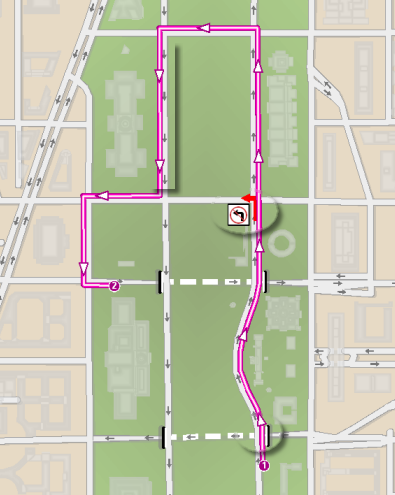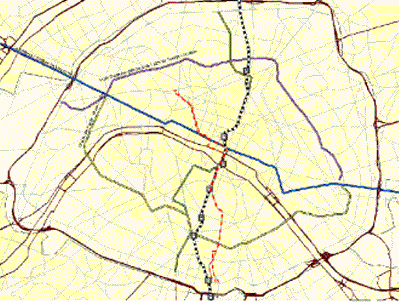Available with Network Analyst license.
Network datasets are well suited to model transportation networks. They are created from source features, which can include simple features (lines and points) and turns, and they store the connectivity of the source features. When you perform a network analysis, it is always done on a network dataset.
A network dataset models the street network shown in the graphic below. The graphic highlights that one-way streets, turn restrictions, and overpasses/tunnels can be modeled. The analyses that are performed on the network, such as the route from stop 1 to stop 2, respect these and other network dataset properties.

To understand connectivity and why it's important, consider that features are normally unaware of each other. For example, if two line features intersect, neither line is aware of the other. Similarly, a point feature at the end of a line feature doesn't have any inherent information that lets it know about the line. However, the network dataset keeps track of which source features are coincident. It also has a connectivity policy, which you can modify, to further define which coincident features are truly connected. This makes it possible to model overpasses and underpasses without having the roads connect. This way, when a network analysis is performed, the solvers know which paths along the network are feasible.
Multimodal network datasets
More complex connectivity scenarios, such as multimodal transportation networks, are also possible. The following is an example of a transportation network in downtown Paris displaying road, rail, and bus networks.

The network dataset also possesses a rich network attribute model that helps model impedances, restrictions, and hierarchy for the network.